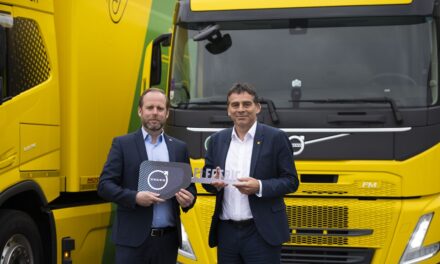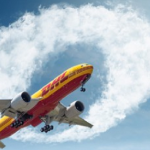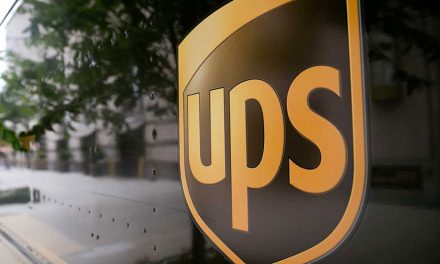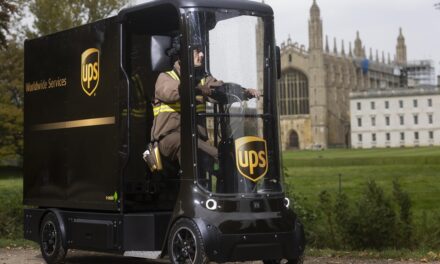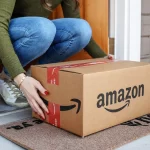
Is UPS getting ready to make a huge splash in the US LTL pond
The one thing for sure is that UPS could buy even the nation's largest domestic ground provider, Yellow Roadway, with plenty left over on its cash-heavy balance sheet.
UPS was sitting on $4.6 billion in cash, cash equivalents, marketable securities and short-term investments as of March 31, according to its government filings. Yellow Roadway, the largest player in the domestic LTL sector, has market capitalization of roughly $1.89 billion, even with its nice recent stock price run up that had it pushing $40 per-share at press time. Several other truckers, even substantial operations with extensive reach, could come for far less.
"It makes sense for a number of reasons," said Donald Broughton, trucking analyst for A.G. Edwards & Sons, St. Louis. "UPS continues to produce sizable amounts of free cash flow and searches for things to do with it."
"UPS has a broad vision for this industry," adds Satish Jindel, principal of Pittsburgh-based SJ Consulting. "I expect them to offer all services that are part of synchronizing commerce. It's not just LTL. LTL is one piece, truckload is another piece. It's whatever shippers need, whether five pounds or 5,000 pounds."
For its part, UPS isn't tipping its hand about what it might, or might not, be mulling.
"It's a fair question but I can't go there," spokesman Norman Black said. "We can never discuss any type of issue that would involve mergers, acquisitions or rumors in the marketplace."
It's a question that truckers, analysts and UPS's competitors are asking, however, as the transport landscape changes and less-than-truckload capability in the world's largest economy is increasingly seen as integral to larger services.
In any scenario, Big Brown has plenty of green to finance any potential deal.
It has earned more than $10 billion the past four years as the nation's most profitable freight concern. That is roughly five times the earnings of the rest of the LTL industry combined during that span. At the same time, UPS has spent more than $1 billion buying more than two dozen companies to build its forwarding, customs clearance and logistics services.
Clearly, UPS's competitive world is changing and now includes a ready example of an LTL business folding swiftly and profitably into a larger operation. Archrival FedEx has had stunning success with its FedEx Freight brand, a highly profitable LTL concern.
"It's been a hugely successful marriage bringing the LTL business to the FedEx portfolio," said Douglas G. Duncan, president and CEO of FedEx Freight, adding that the marriage has been a "two-way street" with exchanges of customers up and down FedEx's corridors.
Established three years ago, FedEx Freight has grown to a $2.7 billion company, the nation's largest regional LTL concern, while delivering more than 60,000 shipments a day.
Duncan won't speculate on UPS's moves, but notes, "As successful as we've been, you'll probably see lots of people emulate what FedEx is doing. But wanting to do it and actually doing it are two different things." FedEx's success across a range of businesses has been popular on Wall Street. Its stock recently cleared $80, up from $64 at the start of the year. UPS was trading around $73, about the same price it was at the start of the year and not far off its initial public stock offering in 1999.
Then there is the German invasion.
DHL is part of Deutsche Post World Net brands including the Deutsche Post German postal authority, DHL, the DHL Danzas Air & Ocean forwarding and logistics business, and Postbank.
Recently, DHL announced it intends to spend $1.2 billion to expand its North American delivery capabilities. Although the air express expansion got most of the attention, several hundred million dollars will go towards developing ground hubs for the deferred surface delivery that is driving the U.S. air cargo market.
To many analysts, the only question regarding DHL on the ground is whether the company will buy more trucking capability or build up those operations on its own. James Valentine, trucking analyst for Morgan Stanley, recently noted that DHL has "deep pockets" and is positioning itself as a competitive threat to UPS in the air and on the ground, further adding fuel to the UPS acquisition fire.
Let's look at the reasons why UPS might buy a large domestic trucker.
— Keep up with Fred. FedEx, as envisioned by founder and Chairman Fred Smith, has virtually perfected the "one-brand" form of shipping, whether air, truck, international, regional or local.
Since buying American Freightways and Viking Freight and merging them into the "FedEx Freight" brand, it has created a highly profitable $2 billion LTL giant while luring shippers who may have required next-day, regional or interregional trucking in their freight matrix.
— The German factor. DHL, a unit of Deutsche Post World Net, is actively seeking further inroads in the U.S. domestic market. Now a distant No. 3 to UPS and FedEx, DHL would like a domestic long-haul component to complement its worldwide operations. Might UPS want to beat the Germans to the post?
— More Teamsters. No company in the world employs more IBT members, or manages them better, than UPS. With more than 225,000 Teamsters, UPS is the IBT's largest employer and James P. "Jimmy" Hoffa knows it. Hoffa knows UPS is the IBT's growth engine, and might be willing to accede to keep it that way. Conceivably, UPS could win work-rule concessions as part of any large UPS buy.
— Yellow Roadway. Trucking's world got a lot more concentrated with creation of the $6 billion LTL giant last December. Yellow Roadway Corp. chief Bill Zollars makes no secret he thinks of his company as No. 3 (behind UPS and FedEx) in the ever-consolidating world of domestic transport. The fact that the Yellow Roadway combination has worked so well for its first seven months might erase the fear that goes along with large transportation mergers.
Zollars likes to think of Yellow Roadway as a transportation services company and says the LTL label is less and less appropriate as YR expands its portfolio of services to meet shipper demands. The same demands pressure UPS.
"There are two ways for them to handle LTL business," said Jindel of SJ Consulting. "One is for UPS to continue to use LTL carriers on a contract basis as it always has. The one difference is, as the LTL industry goes through more consolidation, the number of LTL carriers will continue to shrink. You used to have 100. That's down to 25 or 35 companies of any decent size. That number is going to shrink further. The larger ones would rather deal directly with the customer than go through UPS. How does UPS continue to maintain its leverage over those remaining carriers?
"It's probably not sizeable, but UPS is probably losing some accounts because they don't have a long-haul option," Jindel said. "They are using ocean. They've been using railroads. The only piece they are missing is LTL. Why leave that out?"
One piece UPS does have is ocean transport through its UPS Trade Direct, a unit that seeks to link international maritime business handled as a nonvessel operating common carrier to its package delivery network through port-to-door or door-to-door service. Larger shipments can be handled through LTL delivery, UPS says.
In the past, UPS inquired about purchasing long-haul trucker Consolidated Freightways, which folded two years ago. Presumably, UPS would only consider buying a unionized carrier because of the baggage a nonunion carrier would bring to UPS Teamsters.
Thus the options for UPS, if it wants to buy a unionized carrier, are few. They consist of: Yellow Roadway; Arkansas Best Corp. (parent of ABF Freight System); and USF, the parent of four regional LTL carriers, which recently closed its unionized Red Star unit in the Northeast and expanded its unionized Holland unit.
There is another, more daring scenario. FedEx Freight started with one West Coast regional trucker, Viking Freight, bought as part of the Caliber System purchase. UPS could buy just one top-flight regional trucker – New England Motor Freight and New Penn Motor Express in the Northeast come to mind – and build a regional LTL network in that manner. Both NEMF and New Penn, part of Yellow Roadway, are union carriers, though NEMF is not a Teamster fleet. Either could be a cornerstone for UPS in the East as Viking was for FedEx in the West.
But however many reasons there might be to justify a large domestic UPS purchase, there are nearly as many signs pointing the other way.
l Don't fix what's not broken. Since 2000, UPS has earned $2.8 billion, $2.4 billion, $3.2 billion and $2.9 billion in annual profits, respectively. This came in a down period in the freight economy, a time when at least 15,000 smaller trucking companies went bankrupt or ceased operations. When a company earns nearly $800 million net in the traditionally slow first quarter, as UPS did this year, what's to fix?
— UPS already is a long-haul trucker. Beginning about 10 years ago with its popular "Hundredweight" service, UPS began cherry-picking the long-haul LTL freight it wanted, eschewing the rest. UPS's domestic LTL revenue is estimated to exceed $3.5 billion, making it already the second-largest long-haul carrier after Yellow Roadway.
— Don't hold your breath. Rumors that UPS would buy a long-haul domestic trucker have surfaced with regularity for at least the last 15 years. If UPS had wanted to buy such a carrier, it would have long ago. Why now?
— Cost-benefit is a hard sell. Arkansas Best, parent of rival LTL carrier ABF Freight System, Fort Smith, Ark., has a market capitalization of roughly $789 million. While UPS could easily afford such a buy, convincing shareholders that such an outlay would provide immediate returns is a stretch.
But to some, those arguments don't carry the weight of competitive factors.
"You have a legitimate competitive force and an example of success produced by FedEx Freight," said Broughton. "As much as UPS and FedEx struggle not to play 'me too' with each other, they are nonetheless direct competitors. If one does something and it turns out to be successful, the other one has to rationally consider if it's something they ought to do."
Another factor is the estimated $10 billion unfunded vested benefit liability at the Central States Teamsters plan, to which UPS is the largest contributor. UPS long has sought greater control over these multiemployer plans. Buying a long-haul Teamster carrier would give it precisely that control.
"The looming liability that the Teamsters pension plan presents could be the reason UPS uses to justify buying a unionized LTL carrier," Broughton said.
He rules out UPS buying a nonunion carrier because of the potential hostility that would create with the IBT.
Broughton says the LTL freight UPS hauls is not exactly comparable to that filling other tractor-trailers on the highways. It does not carry hazardous materials, for instance, and its average weight per shipment is hundreds of pounds lighter than the typical LTL shipment.
FedEx Freight average weight per shipment last quarter was 1,146 pounds. Yellow's is about 1,300 pounds. Although UPS accepts hundredweight shipments above 1,000 pounds, it would rather see those shipments broken down: its average weight per shipment is about 100 or so pounds.
"Saying their hundredweight program is equivalent to a LTL program is like saying a LTL carrier is in the truckload business," Broughton said. "It's different kind of freight for a different kind of customer."
If one looks at UPS's franchise, there's "only so much market share left in the businesses they are in," Broughton said. "If you are going to be a transportation company, what other parts could you be in and grow market share? It's a relatively short list, and LTL is atop it."
Of course, if it did make a deal, UPS would have to compromise its usual 12 to 13 percent operating margins posted in its other units. Even the best unionized trucking companies post only 7 to 8 percent operating margins in the best times.
"Shareholders demand you prevent headaches now in the pavement directly ahead of you, not down the road," Broughton said. "It basically comes down to what kind of business UPS wants to expand into. What can Brown do for you? Not LTL, that's for sure."
Not yet, anyway.


